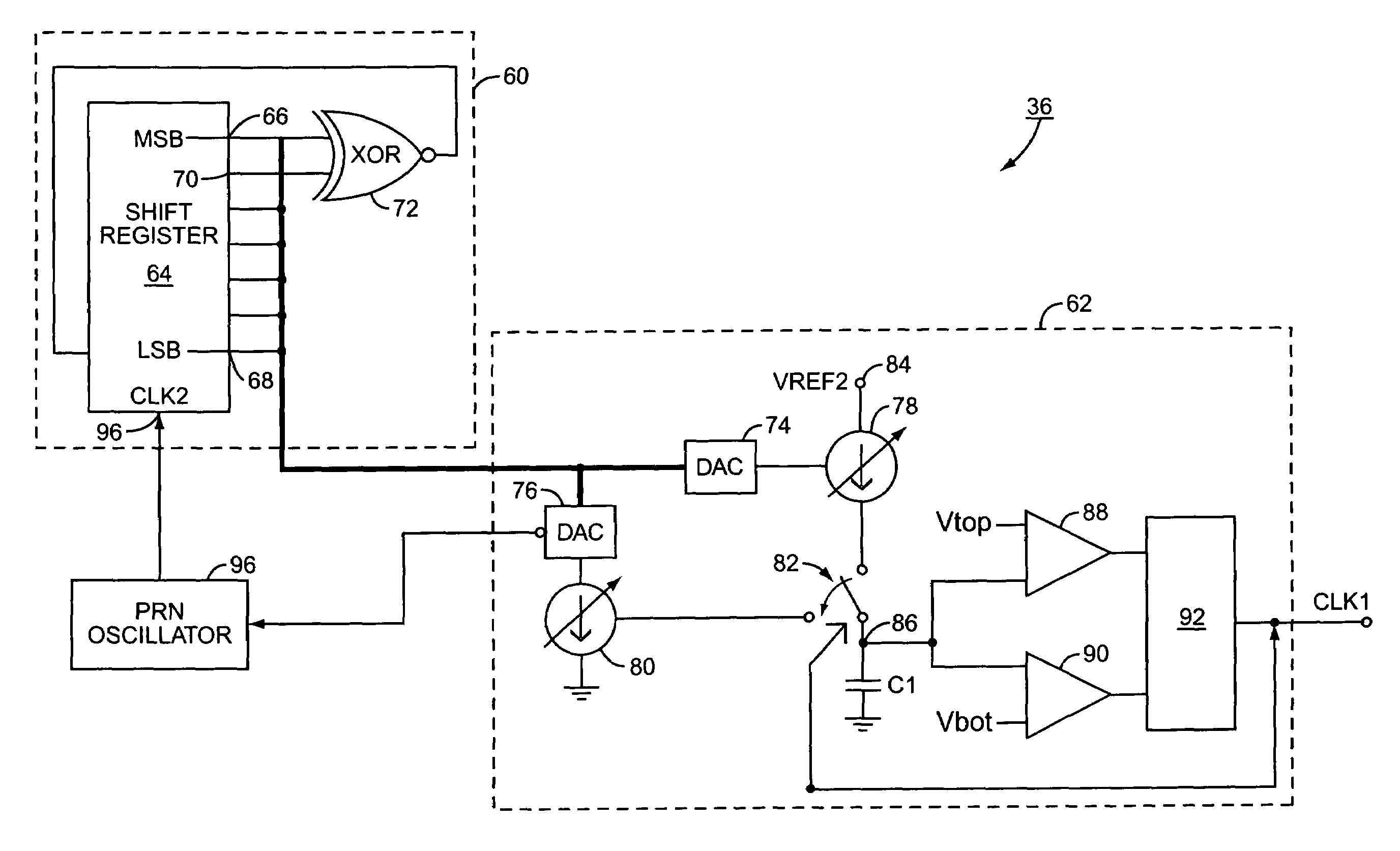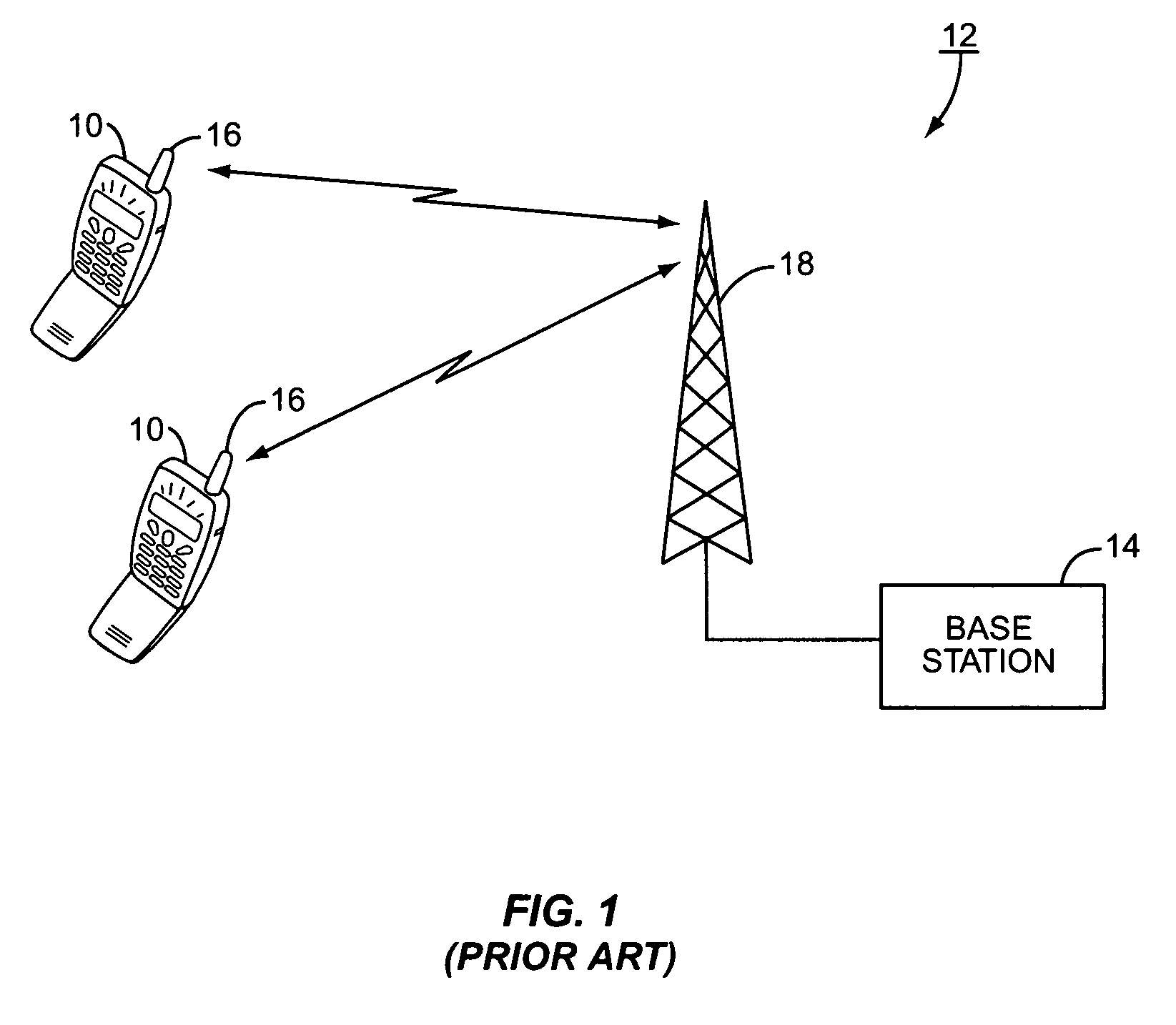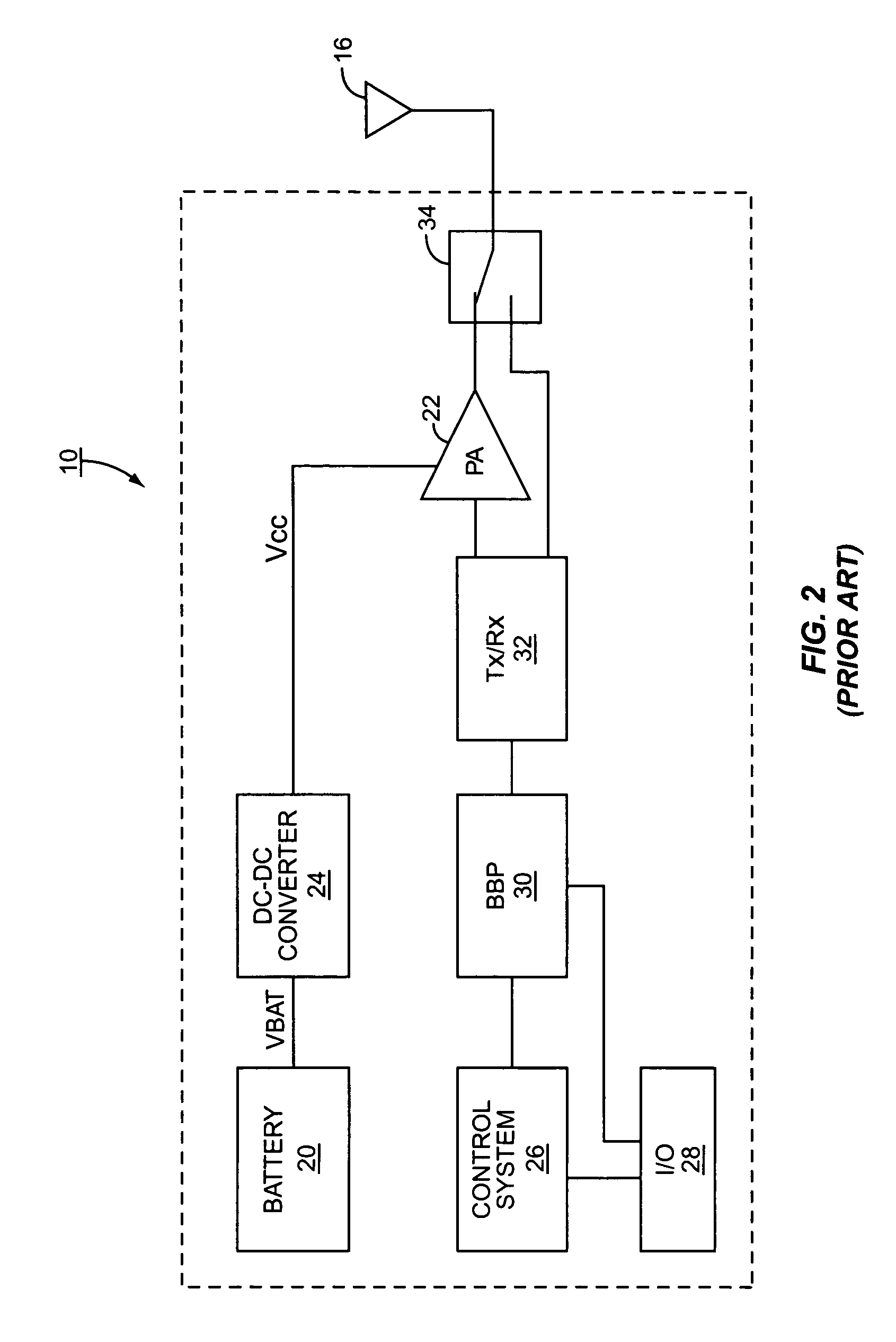DC-DC converter with noise spreading to meet spectral mask requirements
a technology of noise spreading and dc converter, which is applied in the direction of amplitude demodulation, line-fault/interference reduction, pulse technique, etc., can solve the problems of interfering with other electronic devices such as computers or televisions, communication may interfere with other electronic devices, and various communication protocols used by mobile terminals may impose more restrictive limitations, so as to achieve the effect of occupying less spa
- Summary
- Abstract
- Description
- Claims
- Application Information
AI Technical Summary
Benefits of technology
Problems solved by technology
Method used
Image
Examples
first embodiment
[0041]the oscillator 36 of the present invention is illustrated in FIG. 6. Similarly to the oscillator 36 of FIG. 4, the oscillator 36 includes the pseudo random number generator 60 and the clock generation circuit 62. The pseudo random number generator 60 includes the seven bit shift register 64 and the exclusive OR (XOR) gate 72 operating such that the shift register 64 counts in a pseudo random fashion and thus outputs a pseudo random number. Other pseudo random number generators 60 could also be used if needed or desired. Likewise, the number of bits in the shift register may vary from embodiment to embodiment as needed or desired.
[0042]The outputs of the pseudo random number generator 60 are collectively sent to the clock generation circuit 62. The DACs 74, 76 translate the digital signal from the pseudo random number generator 60 into an analog current control signal that controls the variable current sources 78, 80 respectively. The current sources 78, 80 are selectively conn...
second embodiment
[0046]the oscillator 36 of the present invention is illustrated in FIG. 7. The PNG 60 outputs a pseudo random number to a DAC 250 that in turn controls a variable current source 252 via an analog current control signal and further controls the frequency of the PRN oscillator 96 via an oscillator control signal. The current control signal is from a non-inverting output of the DAC 250, and the oscillator control signal is from an inverting output of the DAC 250. Therefore, the oscillator control signal is the inverse of the current control signal provided to the variable current source 252. Accordingly, when the clock generation circuitry 62 is operating at the high end of its frequency range, the PRN oscillator 96 is operating at the low end of its frequency range, and vice versa. Thus, the oscillator 36 spends more time generating higher frequencies than lower frequencies. In doing so, the oscillator 36 operates to flatten the spurious response illustrated in FIG. 5.
[0047]In operati...
PUM
 Login to View More
Login to View More Abstract
Description
Claims
Application Information
 Login to View More
Login to View More - R&D
- Intellectual Property
- Life Sciences
- Materials
- Tech Scout
- Unparalleled Data Quality
- Higher Quality Content
- 60% Fewer Hallucinations
Browse by: Latest US Patents, China's latest patents, Technical Efficacy Thesaurus, Application Domain, Technology Topic, Popular Technical Reports.
© 2025 PatSnap. All rights reserved.Legal|Privacy policy|Modern Slavery Act Transparency Statement|Sitemap|About US| Contact US: help@patsnap.com



